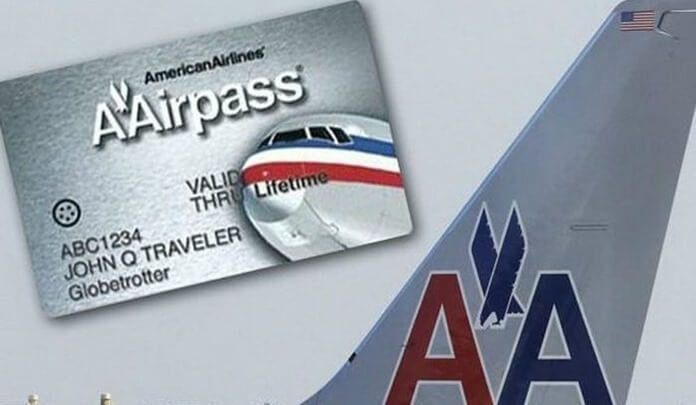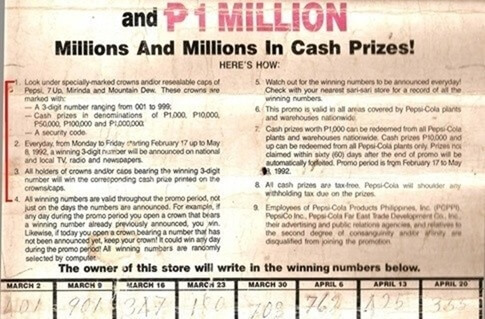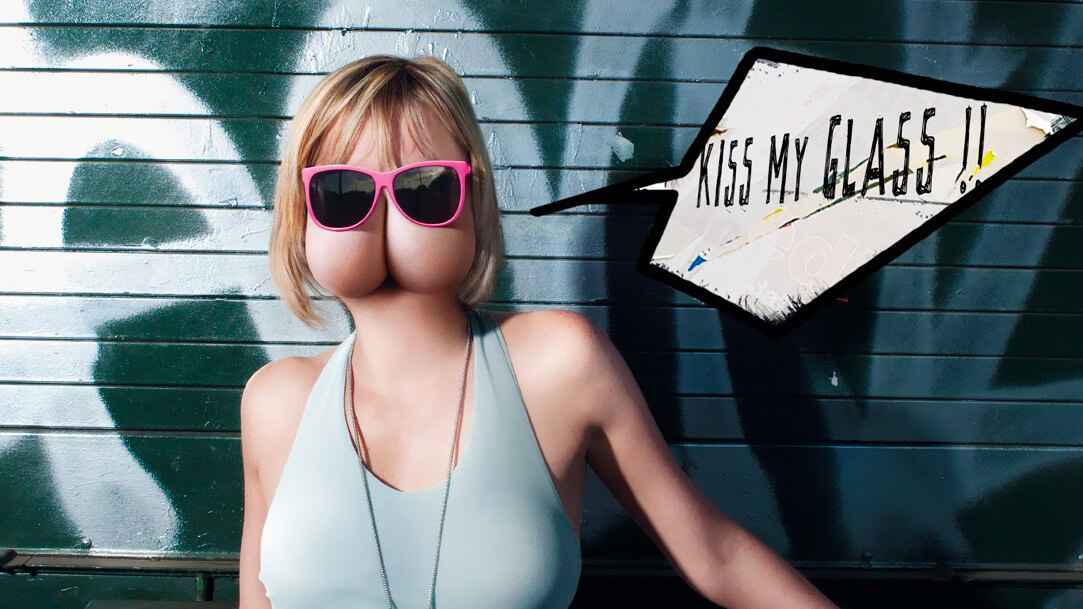Каждый год компании находят новые способы заинтересовать потребителей своей продукцией. Для этого используются привлекательные маркетинговые схемы и рекламные мероприятия с большим бюджетом.
Некоторые из них, такие как длительная рекламная кампания McDonald’s Monopoly, существенно увеличивают прибыль компаний и становятся основой потребительской культуры. Однако по другую сторону спектра находятся самые провальные рекламные кампании в истории. О наиболее известных из них мы сегодня вам расскажем.
10. Sunny Co и купальники «Памела»
 Летом 2017 года калифорнийский стартап Sunny Co Clothing предложил пользователям Instagram бесплатный купальник, в стиле легендарного цельного купальника, который Памела Андерсон носила в телешоу «Спасатели Малибу», и оцененного в 64,99 долларов.
Летом 2017 года калифорнийский стартап Sunny Co Clothing предложил пользователям Instagram бесплатный купальник, в стиле легендарного цельного купальника, который Памела Андерсон носила в телешоу «Спасатели Малибу», и оцененного в 64,99 долларов.
Все, что нужно было сделать, чтобы получить его, это опубликовать рекламное фото девушки в купальнике Sunny Co, отметить на нем производителя, и оплатить транспортные расходы по пересылке купальника.
В рекламной кампании приняли участие более 330 000 человек, и, несмотря на массу технических проблем, Sunny Co все-таки частично выполнила свое обещание, отправив клиентам свыше 50 000 бесплатных купальников.
Нельзя сказать, что эта ошибка уничтожила SunnyCo, поскольку бренд оказался в центре внимания. Но обошлось это слишком дорогой ценой, в буквальном смысле.
9. Chevy и реклама, «сделанная своими руками»
Одна из самых провальных рекламных кампаний в современной истории была связана с известным автомобильным брендом Chevy. В 2006 году он дал фанатам возможность создать свою собственную рекламу для Chevy Tahoe через веб-сайт.
Как и ожидалось, критики бренда увидели в конкурсе возможность указать на выявленные недостатки у Tahoe в частности или у Chevy вообще. Многие из этих материалов оставались на сайте конкурса очень долго, поскольку GM (материнская компания Chevy) специально заявила, что она не будет удалять «негативные» объявления, только «оскорбительные».
В конце концов, похоже, что GM определенно недооценила количество интернет-троллей, критиков и просто токсичных личностей в Сети.
8. Fiat и любовные письма
 В 1994 году автопроизводитель Fiat разослал 50000 анонимных любовных писем молодым женщинам в Испании.
В 1994 году автопроизводитель Fiat разослал 50000 анонимных любовных писем молодым женщинам в Испании.
Письма, написанные на розовой бумаге, расточали адресатам комплименты и предлагали им отправиться в «небольшое приключение», ведь якобы «вчера мы снова встретились на улице, и я заметил, как вы с интересом посмотрели в мою сторону».
Но, прежде чем Fiat успел отправить второе письмо, в котором раскрывалось название компании-отправителя, стало ясно, что рекламная акция с треском провалилась. Вместо того, чтобы вызвать любопытство, эти письма привели к панике и страху, что кто-то преследует этих женщин.
7. American Airlines и AAirpass
 У American Airlines была сложная история, если не сказать больше, но ее самая низкая точка пришлась на начало 1980-х годов — время, когда авиакомпания быстро теряла деньги и должна была что-то придумать, чтобы остаться на плаву.
У American Airlines была сложная история, если не сказать больше, но ее самая низкая точка пришлась на начало 1980-х годов — время, когда авиакомпания быстро теряла деньги и должна была что-то придумать, чтобы остаться на плаву.
Решением стала эксклюзивная программа членства под названием AAirpass. Идея была проста: всего за 250 000 долларов вы могли приобрести пропуск, который давал вам право на пожизненные бесплатные полеты первым классом.
Проблемы начались в 2007 году (опять же в разгар финансовых проблем), когда AA поняла, что некоторые люди слишком часто используют свои пропуска, и это стоило компании миллионы долларов. Нарушителей прав доступа удалили из системы (ссылаясь на «мошенническую деятельность»), однако вопрос со злоупотреблением AAirpass был урегулирован только после нескольких лет судебных разбирательств. В настоящее время эту катастрофическую рекламную кампанию в основном помнят, как громкий пример колоссальной ошибки в бизнесе.
6. Hoover и полеты в оба конца
 В конце 1992 года у компании Hoover скопилось слишком много стиральных машин и пылесосов. Поэтому она начала рекламную кампанию, предложив авиабилеты в оба конца в определенных аэропортах США или Европы с каждым приобретенным пылесосом.
В конце 1992 года у компании Hoover скопилось слишком много стиральных машин и пылесосов. Поэтому она начала рекламную кампанию, предложив авиабилеты в оба конца в определенных аэропортах США или Европы с каждым приобретенным пылесосом.
Хотя маркетологи надеялись, что клиенты будут покупать дорогие модели, они установили минимальную сумму для покупки техники на уровне £ 100, или примерно $ 166 сегодня.
Как только люди увидели рекламу, они стали очень активно раскупать продукты Hoover, и у компании просто не хватило пылесосов на всех желающих, а заодно и денег, чтобы оплатить билеты на самолет, которые стоили дороже покупки.
В результате долгих судебных разбирательств в США и Великобритании Hoover потерял около 50 миллионов фунтов стерлингов.
5. Red Lobster и бесконечный краб
 Многие компании неправильно оценивали потребительский спрос при раздаче чего-то бесплатного (например, Sunny Co Clothing), но ни одна из них не сделала это так катастрофически, как Red Lobster.
Многие компании неправильно оценивали потребительский спрос при раздаче чего-то бесплатного (например, Sunny Co Clothing), но ни одна из них не сделала это так катастрофически, как Red Lobster.
Промоушен «Бесконечный краб» в 2003 году стоил инициаторам миллионы долларов в течение недолгого периода и привел к отставке президента компании Эдны Моррис.
Тактическая ошибка Red Lobster заключалась в недооценке того, сколько раз клиенты будут запрашивать еще одну тарелку с крабом за одно посещение. К тому же, пока одни клиенты наслаждались поеданием «бесконечного краба» за 20 долларов, в вестибюле ресторана скапливалась огромная очередь, а это не способствовало ни имиджу компании, ни увеличению ее прибыли.
4. Dr. Pepper и альбом Guns N ‘Roses
 Создание альбома Guns N ‘Roses под названием «Chinese Democracy» началось в 1994 году. Четырнадцать лет спустя, в 2008 году, альбом все еще находился в стадии производства. И казалось, что он никогда не станет реальностью. Однако, в 2008 году американский гигант безалкогольных напитков Dr. Pepper пообещал, что предоставит бесплатную банку своего напитка каждому американцу, если альбом будет выпущен к концу года.
Создание альбома Guns N ‘Roses под названием «Chinese Democracy» началось в 1994 году. Четырнадцать лет спустя, в 2008 году, альбом все еще находился в стадии производства. И казалось, что он никогда не станет реальностью. Однако, в 2008 году американский гигант безалкогольных напитков Dr. Pepper пообещал, что предоставит бесплатную банку своего напитка каждому американцу, если альбом будет выпущен к концу года.
Ко всеобщему удивлению, Guns N ‘Roses обнародовали свой новый альбом 23 ноября 2008 года. Чтобы выполнить свое обещание, Dr. Pepper в тот же день создал купон-однодневку, который можно было обменять на бесплатную банку напитка. Но многие люди жаловались, что большую часть дня купон был недоступен.
В конце концов, продвижение бесплатной банки Dr. Pepper оказалось неадекватным, и это негативно повлияло на восприятие альбома. Двумя днями позже, 25 ноября 2008 года, солист группы Guns N ‘Roses Эксл Роуз подал в суд на компанию и потребовал извинений.
3. McDonald’s и Летняя Олимпиада 1984 года
Чтобы поддерживать патриотический дух во время Летних игр 1984 года, компания McDonald’s создала рекламный конкурс под названием «Когда США выигрывают, вы выигрываете».
Предпосылка: если США получат медаль, вы получите бесплатную еду («Биг Мак» за золото, картофель фри за серебро и «Кока-колу» за бронзу).
Однако то, что казалось разумным способом извлечь выгоду из крупнейшего спортивного события года, стало маркетинговым кошмаром для McDonald’s после того, как Советский Союз бойкотировал Олимпийские игры. Это привело к тому, что спортсмены из США получили так много медалей, что в некоторых ресторанах McDonald’s даже не хватало фирменного бургера сети
2. Coca-Cola и MagiCans
Идея этой провальной рекламной кампании поначалу казалась превосходной. Среди миллионов банок «Кока-колы», распространяемых по Соединенным Штатам, было н-ное количество «MagiCans», специальных банок с «золотым билетом» внутри. В них были спрятаны призы, которые становились доступны, как только будет открыта банка.
Чтобы такие призы нельзя было слишком легко обнаружить, они находились внутри отделения, которое содержало замену обычной содовой – (нетоксичная) смесь хлорированной воды и неизвестной грязной жидкости, явно предназначенной для предотвращения употребления содержимого.
Акция была отменена всего через несколько недель, после многочисленных сообщений о проблемах с банками: жидкость испортила приз, или приз вообще не всплыл, или — в одном печальном случае — ребенок выпил эту жидкость.
1. Pepsi и дешевая распродажа
 В начале 90-х Pepsi отставала от Coca-Cola на внешних рынках. Поэтому, пытаясь добиться успеха в Юго-Восточной Азии, филиппинские руководители Pepsi разработали оригинальный маркетинговый план под названием «Числовая лихорадка». Было обещано, что один счастливый победитель, нашедший выигрышный трехзначный код под крышкой напитка, получит 1 миллион песо (около 40 000 долларов США). А множество других победителей получат утешительные призы, такие как бесплатные напитки.
В начале 90-х Pepsi отставала от Coca-Cola на внешних рынках. Поэтому, пытаясь добиться успеха в Юго-Восточной Азии, филиппинские руководители Pepsi разработали оригинальный маркетинговый план под названием «Числовая лихорадка». Было обещано, что один счастливый победитель, нашедший выигрышный трехзначный код под крышкой напитка, получит 1 миллион песо (около 40 000 долларов США). А множество других победителей получат утешительные призы, такие как бесплатные напитки.
Определенные номера не должны были быть выбраны в качестве победителя. Одним из таких «неудачников» был номер 349, который напечатали на 800 000 бутылочных крышек. Но консалтинговая фирма, нанятая для розыгрыша выигрышного номера, очевидно, не получила записку с ненужными номерами, и когда ее компьютер выбрал выигрышный номер, им оказался… 349.
Не желая выплачивать миллиарды песо, Pepsi объявила победителям, что на крышках нет правильного кода безопасности. И на Филиппинах начался Pepsi-бунт. На разливочные заводы компании летели коктейли Молотова, грузовики, перевозящие продукцию Pepsi, переворачивали и поджигали, а суды были завалены тысячами судебных исков.
В итоге добровольные выплаты Pepsi в размере 2 миллионов долларов в виде призов быстро переросли в более чем 10 миллионов долларов в виде реституции и оплаты юридических услуг.
📚 Не пропустите интересную информацию:
-
10 странных рекламных акций и подарков
Люди, вероятно, раздавали вещи, чтобы завоевать расположение других, привлечь новый бизнес или выразить признательность за лояльность еще во времена пещерных людей. Предложите что-то маленькое и... -
10 исторических рекламных трюков, которые с треском провалились
Людям нравилось привлекать к себе внимание с тех пор, как внимание существует. Рекламный трюк существует исключительно по этой причине, и когда он работает хорошо, он... -
10 самых эффективных рекламных кампаний по версии Sagmeister & Walsh
Добро пожаловать в мир, где креативность переплетается со стратегией, а концепции становятся конкретными благодаря искусно сконструированным образам. Сегодня мы погружаемся в сферу эффективных рекламных кампаний,... -
10 самых провальных музыкальных фестивалей в мире
В коллективном воображении музыкальные фестивали являются синапсами культурных связей, где искусство и сердца сталкиваются в гармонии. Однако часто разыгрывается диссонансный аккорд, превращающий благозвучные ожидания в... -
10 популярных отелей Чолаклы, Турция — курорт, где хочется остаться дольше
Турция — страна, в которую возвращаются. Кто-то — ради хамама и пахлавы, кто-то — за ласковым морем и безмятежностью «всё включено». Но есть места, куда...







